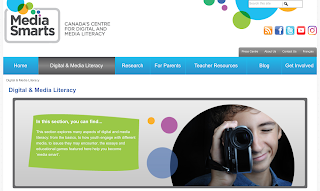Reading Review Part B (LIBE 477)
Collect, link, annotate and publish descriptions of about 3-5 different resources that you have found useful in better understanding your topic(s) from Part A. This blog post will review and highlight the resources as potential citations for your more detailed explorations later in the course.
—---------
Toda, Y., & Oh, I. (2020). Tackling Cyberbullying and Related Problems: Innovative Usage of Games, Apps and Manga (1st ed.). Routledge. https://doi.org/10.4324/9780429260384
This book by Toda and Oh focuses on the tools that Korean and Japanese researchers have developed to combat cyberbullying in their respective cultures. While the authors discuss theories and research related to traditional bullying as well as the different cultural perspectives about how to address bullying, most of the book discusses the different technologies (specifically online games) that educators have used to help their students learn, as well as the apps that children and teens can use to seek help for and report cyberbullying. Toda and Oh also discuss the positive impact of manga in educating and helping children and teens with this issue. At the end, there are 3 additional commentaries from researchers in other cultures (Norway, North America, and Thailand) discussing their perspectives on the research by Toda and Oh.
While this book could be a starting point for educators who want to explore innovative methods to fight cyberbullying, it is very culturally-specific to Japan and Korea, which may not be helpful to educators here in North America, unless their school’s demographic includes a large portion of students from these backgrounds.
—-----------
“Digital & Media Literacy.” MediaSmarts, 20 Aug. 2014, https://mediasmarts.ca/digital-media-literacy. Accessed 27 May 2022.
MediaSmarts: Canada’s Centre for Digital and Media Literacy is a non-profit organisation that creates content specifically for Canadian children, families and educators that will build critical thinking skills that will allow children to demonstrate appropriate digital literacy and citizenship. The MediaSmarts website contains multiple pages for parents and educators, as well as providing access to research about topics that relate to digital media.The Digital and Media Literacy section contains general information about multiple types of media that children use (apps, music, TV/movies, etc) and the issues that arise from the use of these types of media, as well as educational games for students aged 7+ to develop their digital citizenship and awareness. They also provide e-tutorials for adults to develop their own understanding of the issues children face and how to discuss and address these issues.
—------------
“Be Kind Online.” Be Kind Online, SaskTel, https://bekindonline.com/. Accessed 27 May 2022.
Although some portions are only available to Saskatchewan residents/organisations, Be Kind Online is an initiative whose aim is to help participants “rethink online behaviour, embrace our connectedness, and spread positivity” through videos, resources, and grants for educators, parents, and students.
Be Kind Online has a dedicated Resources page. These links to other programs and organizations that focus on bullying (for both the victim and the bully), cyberbullying, and gender and sexual diversity. Be Kind Online has also published a series of short mental health videos that address anxiety for specific age groups (K-4, 5-8, 9-12, and adults). In the Educators section, there are links to free printable posters and activities, but the pay-for resources are only available to Saskatchewan residents.
For anyone outside of Saskatchewan, the most useful portion of Be Kind Online will be their list of online resources to other initiatives that are spread across Canada.


Comments
Post a Comment